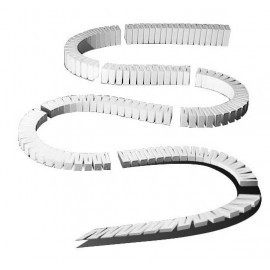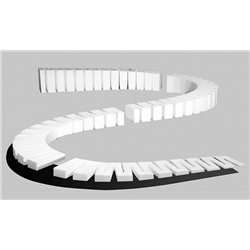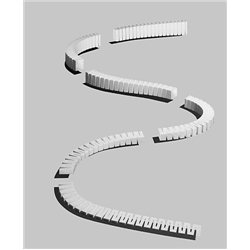Static grass puffer bottles work by manually charging model grass fibres with static electricity. When the charged...
Cart 0 Product Products (empty)
No products
Free shipping! Shipping
£ 0.00 Total
Product successfully added to your shopping cart
Quantity
Total
There are 0 items in your cart. There is 1 item in your cart.
Total products (tax incl.)
Total shipping (tax excl.) Free shipping!
Total (tax incl.)
Search Tips
What is the minimum space required to install an N gauge incline?
How much space is required to fit an incline onto an N gauge model railway depends on how high you want to raise the track, the higher the target, the greater the space required.
To help you calculate how much space is required for your project, you will need to look at what gradients are possible. On model railways, a gradient of 1 in 50 is what most modellers aim for. If you are considering a gradient steeper than this, be prepared for some compromise of traction or operational restrictions.
But assuming you don't want to push the boundaries, a 1 in 50 gradient simply means that for every centimetre you want your track to rise, a distance of 50 centimetres should be allowed to achieve it. The formula also works for inches if you prefer to use those, for every inch of rise, 50 inches of travel is needed.
A good example of the calculation in practice is when an N gauge track needs to rise to cross over another track. It will require raising approximately 5 cm, so simply take that height and multiply it by 50 to give the length of incline needed, in this case, 250 cm (2.5 m). But don't forget, you will need to allow for an additional 250 cm if you want the track to drop back to baseboard level on the other side!
Posted in: Model Railway
Click here to receive the tips weekly in your mailbox. You can unsubscribe at any time.










